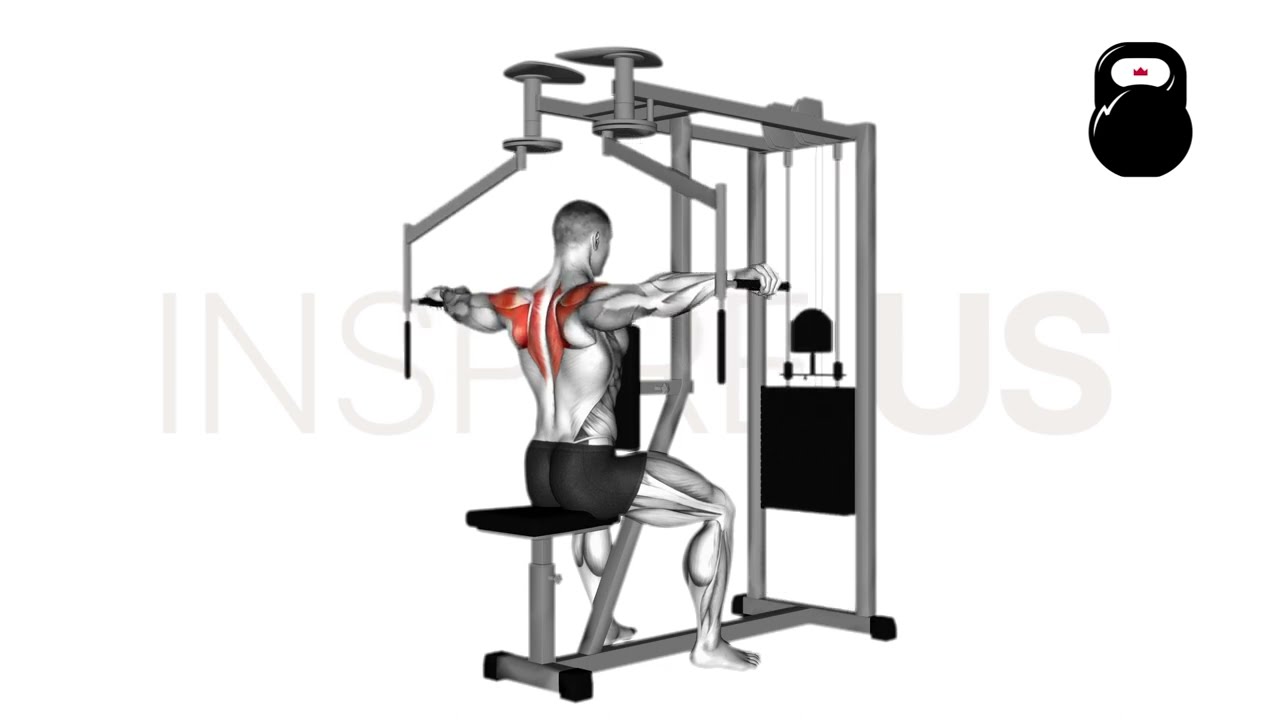Pec Deck Machine Rear Delt Fly: Benefits, Muscles Worked, and More
Also known as reverse pec decks, rear delt pec deck flys or machine rear delt flys - rear delt flys performed with the use of a pec deck machine allow for significant development of the posterior deltoids and many other upper back muscles.
What are Pec Deck Rear Delt Flys?
Pec deck rear delt flys are a compound machine-based exercise where the lifter will sit facing the backrest of the machine as they abduct their arms and squeeze their scapula together.
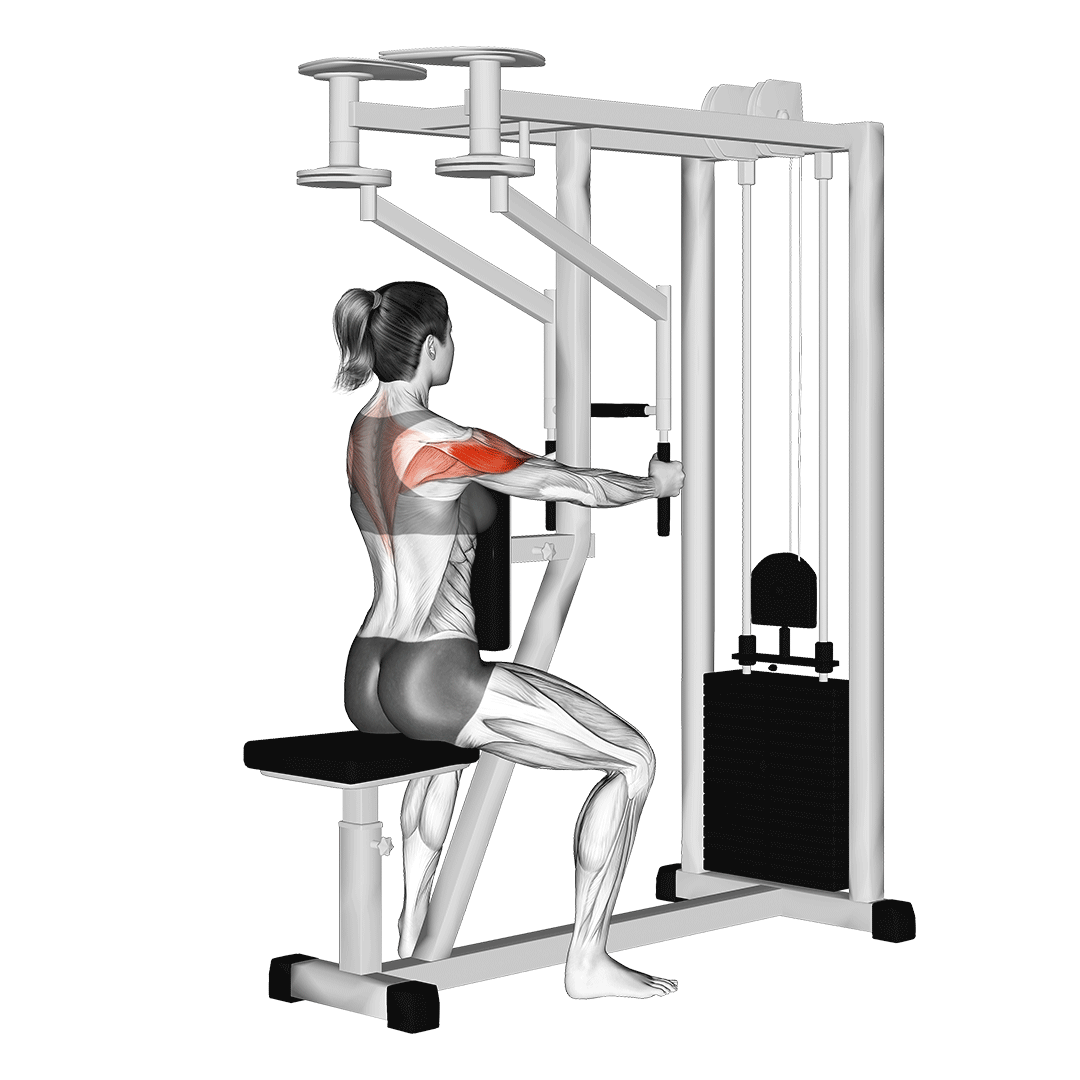
The reverse pec deck is most often performed as an accessory movement due to the machine-based and relatively low impact nature involved.
Lifters will frequently perform it for low resistance and high volume sets in the hopes of improving muscle mass along the upper back, posterior deltoids and the upper trapezius.
Are Reverse Pec Decks the Right Exercise for You?
Reverse pec decks are quite safe and relatively easy to learn. Even complete novices can master the exercise over the course of a single session, so long as the machine is adjusted correctly.
Bodybuilders and similarly hypertrophy-oriented weightlifters will find reverse pec decks to be the most useful, as it is perfect for applying consistent and stable tension throughout a large ROM.
However, those with a history of shoulder, scapula or elbow issues may wish to first speak to a medical professional prior to attempting reverse pec decks.
How to do Reverse Pec Decks
To perform a rear delt fly with the use of a pec deck, the lifter will begin by firsts eating themselves facing the backrest of the machine, handles adjusted so that they start at the front of the lifter’s chest.
Gripping these handles in a double overhand or neutral grip, the lifter then ensures their torso is vertical, their deltoids in a neutral position and their elbows straight but not completely locked out as they perform the rep.
To do so, the lifter squeezes their posterior deltoid head and draws their arms out to the sides of their torso, retracting their shoulder blades as the arms rotate towards the end of their range of motion.
With the arms parallel to the sides of the torso, the scapula fully retracted and the elbows still straightened, the lifter then slowly reverses the motion in a controlled manner. This marks the completion of the repetition.
Ensure that the head does not jut forwards and that the torso remains stationary throughout the movement. The majority of force present within the exercise should be derived from the posterior deltoids and other mid-back muscles.
Sets and Reps Recommendation:
Because of their machine-based nature and large range of motion, reverse pec decks are perfect for inducing muscular hypertrophy.
To maximize this, perform the exercise for 3-4 sets of 8-12 repetitions at a moderate load.
What Muscles are Worked by Pec Deck Rear Delt Flys?
Reverse pec decks are considered to be a compound movement, meaning that multiple muscles are involved throughout its entire movement pattern. These muscles are divided by the role they perform within the exercise.
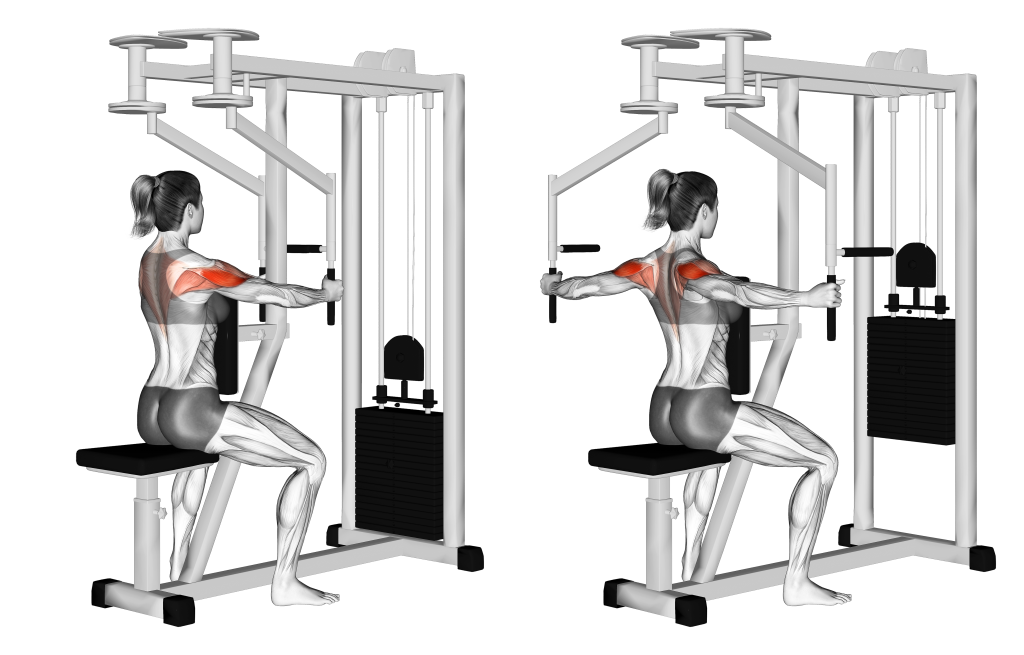
Varying degrees of dynamic contraction classify a specific muscle group as a “mover” or “mobilizer” muscle. Likewise, static (isometric) contraction classifies a muscle as a “stabilizer” due to its function within the exercise.
Primary and Secondary Mover Muscles
Apart from targeting the rear delts in a large range of motion, rear delt flys will also recruit the middle trapezius and the rhomboids in the role of primary mobilizer muscles.
Alongside these are the upper trapezius, infraspinatus, the teres minor and major and the rhomboids - all of which are also contracted dynamically.
In general, these muscles are worked due to the horizontal shoulder abduction involved in the movement, as well as the scapular retraction performed at the apex of each repetition.
Stabilizer Muscles
Apart from the aforementioned mover muscles, the reverse pec deck will also contract the lateral deltoids and triceps brachii in a static capacity.
What are the Benefits of Doing Reverse Pec Decks?
Rear delt flys are commonly performed with the use of a pec deck machine for the many advantages it offers. Among these are a more stable level of tension, a fixed bar path and overall greater safety in comparison to other rear delt fly variations.
Excellent at Building Mass in the Traps, Rear Delts and Other Back Muscles
The main benefit to reverse pec decks is its capacity to build mass in the traps, posterior deltoid heads and the mid-back as a whole.
Because of its large range of motion, consistent level of resistance and high volume capacity, the exercise excels at inducing muscular hypertrophy - especially in comparison to other traditional mid-back compound exercises that provide a somewhat different training stimulus.
To maximize the effectiveness of reverse pec decks as far as hypertrophy goes, ensure the eccentric phase of the movement is slowed down and that each set leans towards a higher amount of volume.
Comparatively Large Range of Motion, Fixed Movement Path
Unlike upright rows or close grip lat pulldowns, the reverse pec decks features a significantly larger range of motion in regards to the posterior deltoids and mid-back muscles.
A larger range of motion allows muscles to develop more effectively, especially in the “stretched” position where they are fully lengthened.
In combination with the relatively fixed path of the pec deck machine’s handles, these advantages equate to a high propensity for inducing muscular hypertrophy and a relatively low risk of “cheating” the repetition in some way.
Accessible, Adjustable and Simple
As a benefit shared with most other machine-based exercises, the pec deck machine and its ensuing reverse fly variation are easily adjusted and grasped by even complete novices to weightlifting.
Correctly adjusting the machine allows for a greater range of motion to be achieved, a reduced risk of injury and an overall more comfortable exercise as a whole.
This adjustability - combined with the general simplicity of the rear delt fly - create a movement well-suited to all lifters, regardless of experience or training needs (other than strength-oriented ones).
Reinforces Scapular Retraction, External Shoulder Rotation and Arm Abduction
Because the pec deck rear delt fly trains the posterior deltoid head and other scapula-related musculature, their ensuing biomechanical actions are also reinforced as well.
These are primarily retraction of the scapula, external rotation of the shoulders and horizontal arm abduction along a sub-parallel or parallel plane.
Lifters with difficulty maintaining stability or outputting force through these biomechanical functions may find that the reverse pec deck is ideal for improving their issues - so long as the lifter has been medically cleared beforehand.
Corrects Poor Upper Back Posture
Although not as effective as more rehabilitation-focused exercises like the face pull, the pec deck rear delt fly is also excellent at improving poor upper back posture in cases where the issue is caused by muscular weakness.
Those with uneven shoulders, a forward-hunched posture or a winged scapula may be able to incorporate reverse pec decks into their rehabilitation program for greater improvement.
Of course, remember to first consult with a physical therapist or similar medical professional prior to doing so, as certain underlying causes of poor posture can actually be worsened by resistance training.
Comparatively Safe for Lower Back, Safer to Max Out on
Not all exercises are necessarily equal as far as safety at maximum effort goes.
Movements like the barbell bench press, good mornings and cheat curls can all result in serious injury if lifters take themselves to absolute muscular failure without necessary precautions.
Fortunately, the pec deck rear delt fly is not among these exercises, and is in fact excellent for maximizing effort on. So long as proper form is followed, lifters can effectively fully exhaust their back and rear delts without serious risk of injury.
Keep in mind that consistently training to failure is not always a good training habit - be strategic about your fatigue and training intensity.
Common Rear Delt Machine Fly Mistakes
Although quite safe, ensure that you avoid the following common mistakes when performing rear delt flys on a pec deck.
Insufficient Range of Motion
The most important aspect of the rear delt fly is its range of motion, where each repetition should start and end with the handles at the front of the torso.
Likewise, the highest point of the movement should also involve significant retraction of the shoulder blades, aiding with proper engagement of the mid-back musculature.
Failing to complete a full range of motion can lead to overall poor muscular development, if not sticking points and instability as well.
Failing to Engage Scapula
During the highest point of the repetition (as the arms abduct immediate to the sides), the lifter should focus on properly contracting their mid-trapezius and nearby muscles by squeezing their scapula together.
Apart from ensuring that such muscles are contracted correctly, properly engaging the scapula allows for the lifter to maximize their force output, improving training intensity and ensuring their muscles are worked to a sufficient capacity.
Swinging the Torso
As much as possible, lifters should seek to avoid moving their torso during a pec deck rear delt fly.
Doing so can generate momentum from muscles other than the intended mobilizers, leading to reduced training intensity, poor muscular development and even injuries in more extreme cases.
If possible, a good tip to help avoid moving the torso unconsciously is to brace the chest against the backrest of the machine. This creates greater leverage with which they may retract the scapula, and helps “lock in” the torso’s orientation during the repetition.
Extending Neck and Head
Although less likely to result in injury than other mistakes, lifters should avoid extending their head forwards as they perform reverse pec decks. Jutting the head forwards can increase strain and pressure on the neck, potentially resulting in injuries and an overall poor stance.
To properly contract the upper trapezius and avoid neck injury, keep the neck aligned over the rest of the torso and fix the eyes on a point several feet away.
Poor Machine Adjustment
Perhaps the most common mistake seen with both conventional and reverse pec decks is poor configuration of the machine itself.
The first aspect of the machine to examine is seat height - the seat should be set high enough that the upper arms remain parallel to the floor throughout the ROM without raising higher than the shoulders.
The handles should be positioned so that they are directly at the front of the torso at the start and end of each repetition. Often, this is the “0” or furthest level of adjustment the handles can be adjusted to.
Finally, the specific grip used should also be adjusted as needed. Depending on mobility and individual preference, either a pronated or neutral grip may be used.
Alternatives to the Reverse Pec Deck
If doing rear delt flys on a pec deck machine doesn't quite hit your rear delts how you’d like, try the following alternatives out instead.
Dumbbell Rear Delt Flys
Dumbbell rear delt flys are a variation of rear delt fly performed with the body hinged at the torso and the arms angled somewhat backwards.
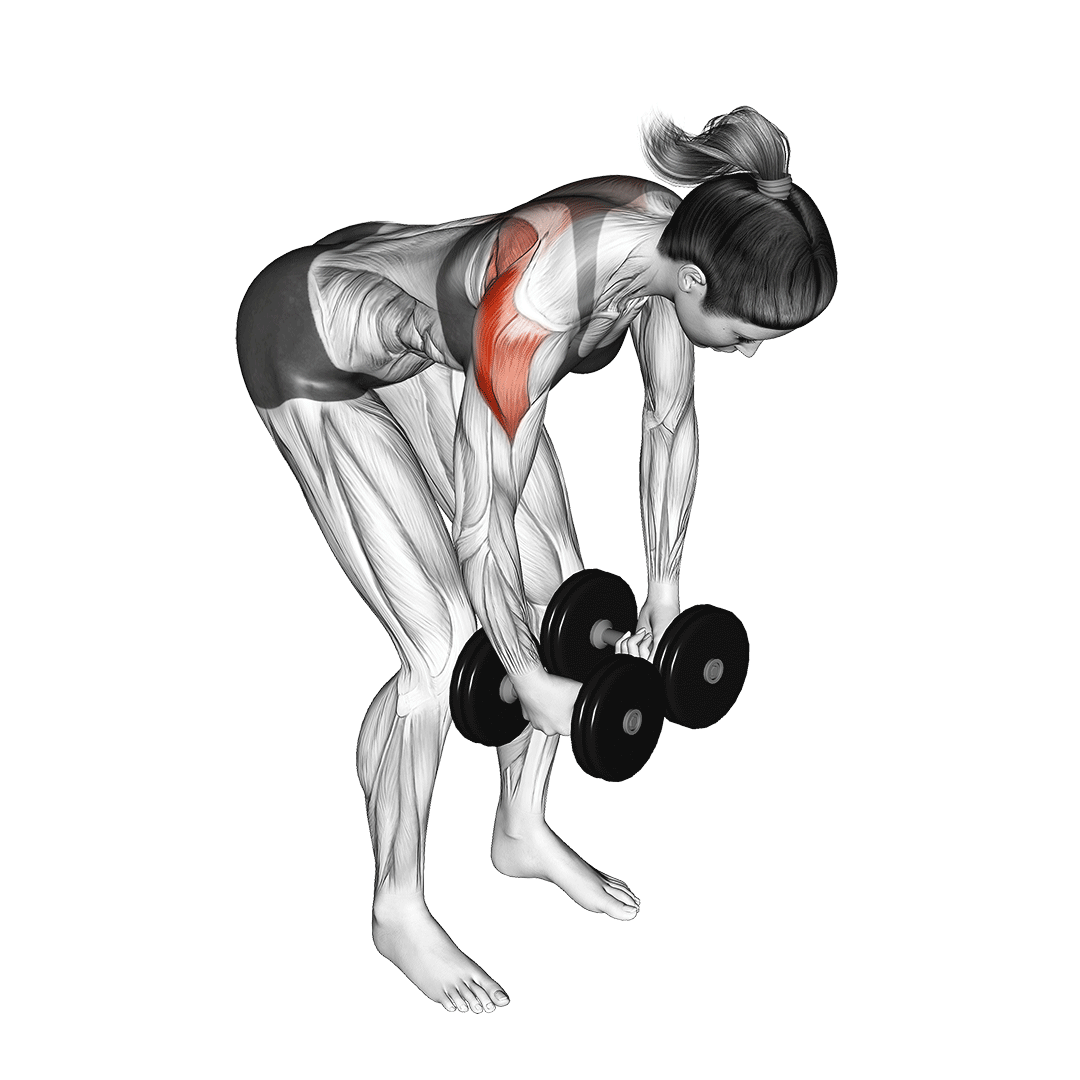
Unlike the pec deck rear delt fly, dumbbell rear delt flys feature a relatively short range of motion, less involvement of back muscles and a far less vertical torso orientation.
While both exercises are essentially performed for much the same purpose, the greater isometric contraction and more focused isolation of the dumbbell variant can prove useful in specific training situations.
Band Pull Aparts
For a more convenient and low-impact substitute, pec deck rear delt flys can be replaced with band pull aparts.

Essentially, band pull aparts involve the lifter replicating the same movement as is seen in the former exercise - only with a resistance band being pulled out to the sides at chest level.
While targeting much the same muscles and producing a similar effect, band pull aparts are somewhat less effective for hypertrophy and strength development due to their variable resistance over the course of the entire ROM.
They are best employed when the access to a gym is limited, or for rehabilitation of the rotator cuff and shoulder joint.
Face Pulls
Face pulls are a similarly machine-based posterior deltoid exercise involving the lifter pulling a cable handle towards their face as they rotate their arms parallel to the shoulders.
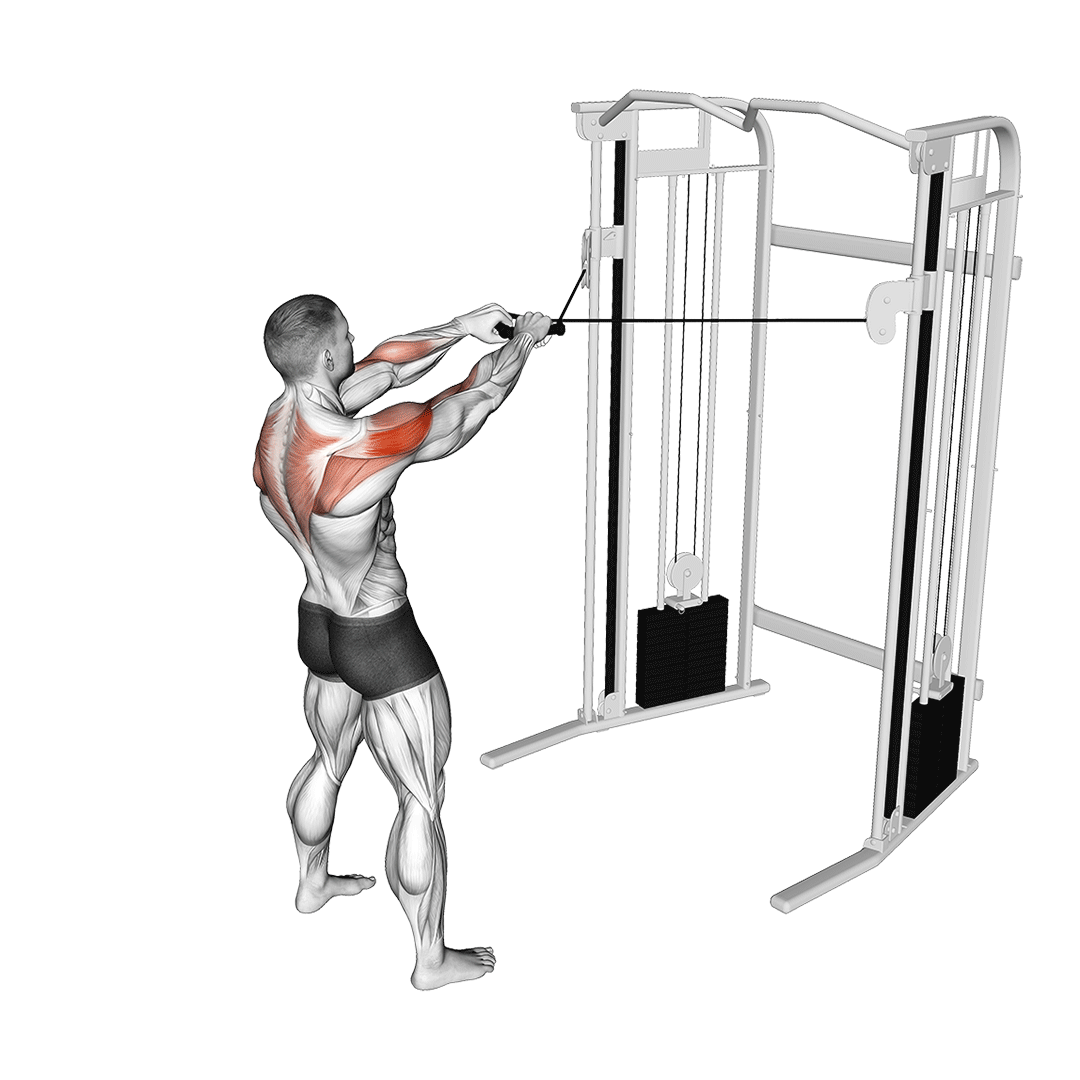
As a substitute exercise, face pulls allow for reduced strain on the elbows and shoulders while simultaneously also fulfilling the role of a rehabilitation exercise, if needed.
Use face pulls as a reverse pec deck substitute for a more free movement pattern, greater rhomboid and teres activation or simply if no pec deck machine is present.
Frequently Asked Questions (FAQ)
Are Pec Deck Rear Delt Flys Good Enough for Shoulders?
Although excellent for the rear delts, the medial and anterior heads of the deltoids are not targeted as much by this exercise.
For better results, also seek to perform movements like the barbell overhead press or lateral raise as well.
Do Pec Decks Hit the Shoulders?
Yes - pec decks target the anterior deltoids to a small extent.
However, this is largely incidental, and a far better shoulder exercise can be had in the form of lateral raises, overhead presses or certain variations of fly.
Can You Build Big Shoulders with Rear Delt Flys?
Yes - so long as you summarily target your remaining two deltoid heads as well. Alongside rear delt flys, aim to perform a similar exercise that works the medial and anterior deltoid muscles in addition.
Hitting all three heads of your deltoid muscle group will not only aid in building big shoulders, but will also help produce a more “3-D” shape, further aiding with their aesthetic appearance.
References
1. Schoenfeld, B., Sonmez, R. G., Kolber, M. J., Contreras, B., Harris, R., & Ozen, S. (2013). Effect of hand position on EMG activity of the posterior shoulder musculature during a horizontal abduction exercise. Journal of strength and conditioning research, 27(10), 2644–2649.
2. Campos YAC, Vianna JM, Guimarães MP, Oliveira JLD, Hernández-Mosqueira C, da Silva SF, Marchetti PH. Different Shoulder Exercises Affect the Activation of Deltoid Portions in Resistance-Trained Individuals. J Hum Kinet. 2020 Oct 31;75:5-14. doi: 10.2478/hukin-2020-0033. PMID: 33312291; PMCID: PMC7706677.

